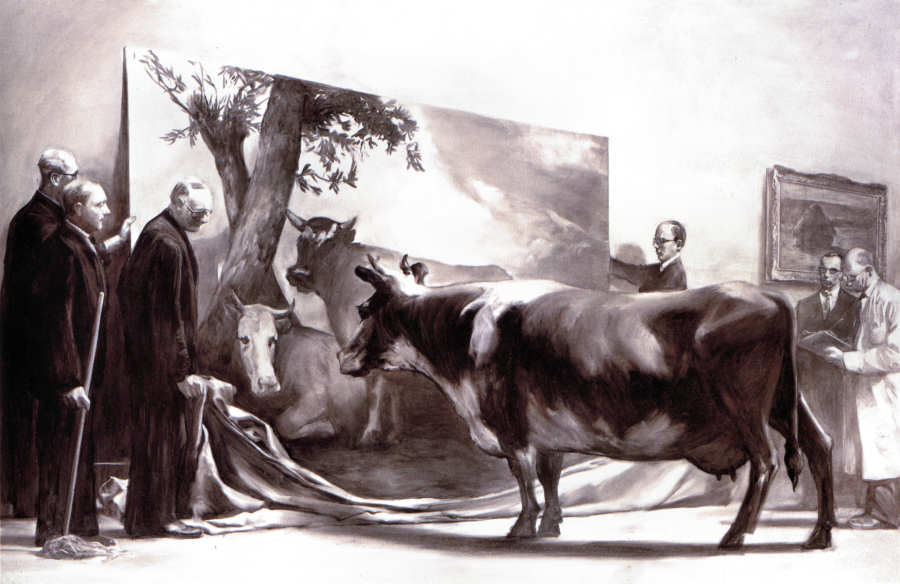
The Innocent Eye Test
Mark Tansey, 1981

The Innocent Eye Test
Mark Tansey, 1981
[This painting has been interpreted by many as a not-so-veiled commentary on art critics.]
* * * * *
I am not a realist painter. In the nineteenth century, photography co-opted the traditional function of realist painters, which was to make faithful renditions of “reality.” Then the realist project was taken over by Modernist abstraction, as later evidenced in the title of Hans Hofmann’s book Search for the Real. Minimalism tried to eliminate the gap between the artwork and the real. After that, the project itself dematerialized. But the problem for representation is to find the other functions beside capturing the real.
In my work, I’m searching for pictorial functions that are based on the idea that the painted picture knows itself to be metaphorical, rhetorical, transformational, fictional. I’m not doing pictures of things that actually exist in the world. The narratives never actually occurred. In contrast to the assertion of one reality, my work investigates how different realities interact and abrade. And the understanding is that the abrasions start within the medium itself.
I think of the painted picture as an embodiment of the very problem that we face with the notion “reality.” The problem or question is, which reality? In a painted picture, is it the depicted reality, or the reality of the picture plane, or the multidimensional reality the artist and viewer exist in? That all three are involved points to the fact that pictures are inherently problematic. This problem is not one that can or ought to be eradicated by reductionist or purist solutions. We know that to successfully achieve the real is to destroy the medium; there is more to be achieved by using it than through its destruction.
—Mark Tansey, quoted in Mark Tansey: Visions and Revisions, by Arthur C. Danto